December 5, 2011 in Culture and History | Comments (0)
Tags: Beaux-Arts, David Allen Jacobs, David Rockwell, Seville Hotel, The Carlton Hotel

Lobby of the Carlton Hotel
The Carlton was first opened in 1904, immediately before the opening of the New York City subway. Originally called the Seville, it is a wonderful example of the Beaux-Arts style which was all the rage in New York at the time. Harry Allen Jacobs designed and completed the elegant hotel, which helped to turn the area into one of New York’s swankiest destinations.
Recently the hotel has undergone a face-lift of unusual proportions, bringing the Carlton into the 21st century without sacrificing any of the old world class, or its unique, luxurious style. Designer David Rockwell executed the remake, successfully maintaining the historic hotel as one of New York’s grandest.
Come visit and view what the hoteliers believe is the pinnacle of the Carlton’s new look: the two-story modern waterfall flowing in the lobby which reveals a large, vintage black and white photo of the Seville Hotel as it was in 1924.
October 10, 2011 in Culture and History | Comments (0)
Tags: Five Chiefs: A Supreme Court Memoir, John Paul Stevens, Supreme Court
In the mood for some intellectual stimulation? There are a huge number of lectures available for New Yorkers to attend this coming week. One lecture of particular interest will take place at the 92nd Street Y, featuring the retired Supreme Court Justice John Paul Stevens.
Stevens served for 34 as s Justice, and he now wrote a book about his experiences on the highest court in the land. The book, Five Chiefs: A Supreme Court Memoir, describes some of the landmark decisions in which Stevens was involved.
The talk will feature a discussion of some of those crucial decisions, including Gregg v. Georgia, which reaffirmed the use of the death penalty as a form of punishment for serious crimes.
Call the ‘Y” for more information and reservations: 212-415-5500.
September 12, 2011 in Culture and History,Museums | Comments (0)
Tags: Gary Marlon Suson, Ground Zero Museum Workshop, World Trade Center
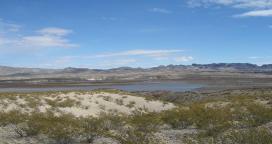
Ground Zero Museum Workshop is Kid Friendly
This is an appropriate time to remember the events of September 11, 2001, now that it is exactly ten years after that horrific attack on New York’s World Trade Center, Washington DC’s Pentagon, and a downed airliner whose final destination can only be nightmarishly imagined.
In New York the Ground Zero Museum Workshop:Images and Remnants from the Recovery is the ideal place to spend some time, looking at stunning and rare photos taken by the “Official Ground Zero Photographer for the Uniformed Firefighters Association,” Gary Marlon Suson.
Visitors have described the one room exhibit as the “biggest little museum” in New York; with large content in a small facility.
Many photos are displayed in realistic 3D installations. Also on display are remnants from the towers and rare video footage.
There are daily two-hour long tours with your own tour guide for explanations. Entrance fees are donated to 9/11 and FDNY related charities. The images are non-graphic, making this memorial to the tragic day a kid-friendly venue.
Please note that the Ground Zero Museum Workshop is NOT located at Ground Zero, but in the meat-packing district just 7 minutes away on the “E” train from the site of the WTC at 420 West 14th Street, 2nd floor, 212-209-3370.
On most days there are two tours, and it is strongly recommended to buy tickets in advance, they sell out quickly since only 28 people can be on any one tour at a time. Follow the link for more information.
June 27, 2011 in Culture and History,Tourism | Comments (0)
Tags: Chrysler Building, Fifth Avenue, New York, South Seaport Pier 17, South Street Seaport District
We’ve all seen the movies, read the books, watched the plays. We know New York can be as romantic as any European hot spot. But how, where, when?
Here are a few suggestions to experience some of the more tender New York moments that can be had in the big, beloved apple.
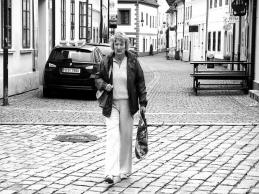
South Street Seaport
South Street Seaport District- Conveniently located walking distance from Chinatown; you will enjoy people-watching, relaxing and souvenir shopping in this lovely little area. South Seaport Pier 17 is a bustling touristy place which is the old fish market converted into wonderful shops and restaurants. This is a great place to get a fantastic view of the ever-impressive Brooklyn Bridge.
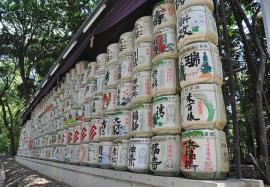
Saks Fifth Avenue
Fifth Avenue- For many people Fifth Avenue is the heart of New York’s classy reputation. Well known as one of the premium bits of real estate anywhere in the world, taking a walk down Fifth Avenue makes you feel fabulously wealthy just by osmosis. Some of the sites to be had on Fifth Avenue are of the Empire State Building, the New York Public Library, Rockefeller Center, Saint Patrick’s Cathedral, Central Park, the Metropolitan Museum of Art and the Guggenheim Museum. The best of Fifth is all within about a one mile wonderful walk, from 34th Street to 59th Street, with lots of unbelievable, typically New York, shopping.
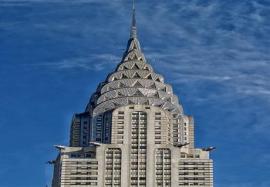
Chrysler Building
Chrysler Building– This building is a classy alternative to a visit to the Empire State Building. Its classic ArtDeco Style is an iconic symbol of New York and one of the city’s most renowned skyline features. Chrysler was the first building to reach beyond 1000 feet, but its role as the world’s tallest building was short-lived as only 11 months later the Empire State Building reached even higher towards the heavens. A visit to this gorgeous testament to 1930s architecture will not be in vain.
June 20, 2011 in Culture and History | Comments (0)
Tags: Atlantic Avenue Tunnel, Beacon Theatre, history, landmarks, Little Red Lighthouse, St. Paul's Chapel
As one of the more venerable of US cities, New York has a lot to offer history buffs. Here are a few New York landmarks which you may have heard of, but my guess is more likely not.
 • The Atlantic Avenue Tunnel- This is officially distinguished as the ‘world’s oldest subway tunnel.” Built in 1844 underneath one of Brooklyn’s busiest streets in what was then the City of Brooklyn, the tunnel is one half-mile long and carries two standard gauge railroad tracks. The tunnel took only 7 months to build, using the ‘cut-and-cover’ method, using only hand tools and simple equipment. The tunnel was rediscovered by Bob Diamond in 1980. In 1982 The Brooklyn Historic Railway Society was created in order to preserve, publicize and allow public access to the tunnel. The tunnel is found today within the Cobble Hill and Brooklyn Heights Historic Districts as well as within a U.S. Historic District. The Atlantic Avenue Tunnel is a landmarked and protected historic site.
• The Atlantic Avenue Tunnel- This is officially distinguished as the ‘world’s oldest subway tunnel.” Built in 1844 underneath one of Brooklyn’s busiest streets in what was then the City of Brooklyn, the tunnel is one half-mile long and carries two standard gauge railroad tracks. The tunnel took only 7 months to build, using the ‘cut-and-cover’ method, using only hand tools and simple equipment. The tunnel was rediscovered by Bob Diamond in 1980. In 1982 The Brooklyn Historic Railway Society was created in order to preserve, publicize and allow public access to the tunnel. The tunnel is found today within the Cobble Hill and Brooklyn Heights Historic Districts as well as within a U.S. Historic District. The Atlantic Avenue Tunnel is a landmarked and protected historic site.
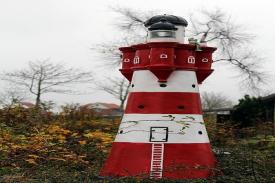
• The Beacon Theatre- This theater, located at 2124 Broadway, seats 2,894 people in three tiers, and was opened in 1929. Although it was originally opened to present motion pictures and vaudeville shows, the Beacon is most famous as a music hall, which is what has been its primary function since the 1970s. An annual spring concert series which is still going on today featuring the Allman Brothers also had such classic bands as the Grateful Dead, the Rolling Stones, and others. The décor is ornate neo-Grecian with a trademark two-story, circular lobby. Both sides of the stage are adorned with statues of 30-foot-tall Greek goddesses.
 • St. Paul’s Chapel- built in 1766, St. Paul’s is an Episcopal church, and is New York’s oldest continuously used building. On inauguration day the first US President, George Washington, prayed here on April 30, 1789. Over the alter, in the chapel is the ornamental design of “Glory,” which is the work of Pierre L’Enfant, the designer of Washington, DC. The “Glory” illustrates Mt. Sinai in clouds with lightning; the word for God in Hebrew is in a triangle, and the tablets of the Law with the Ten Commandments. More recently St Paul’s played an important role as a resting station for rescue workers during the days following the terrorist attack on the World Trade Center on September 11, 2001, due to its location right across the street from Ground Zero. Today visitors to St. Paul’s can view the exhibit, “Unwavering Spirit: Hope and Healing at Ground Zero” which chronicles the special history of St. Paul’s and its volunteer ministry during the weeks and months following September 11th.
• St. Paul’s Chapel- built in 1766, St. Paul’s is an Episcopal church, and is New York’s oldest continuously used building. On inauguration day the first US President, George Washington, prayed here on April 30, 1789. Over the alter, in the chapel is the ornamental design of “Glory,” which is the work of Pierre L’Enfant, the designer of Washington, DC. The “Glory” illustrates Mt. Sinai in clouds with lightning; the word for God in Hebrew is in a triangle, and the tablets of the Law with the Ten Commandments. More recently St Paul’s played an important role as a resting station for rescue workers during the days following the terrorist attack on the World Trade Center on September 11, 2001, due to its location right across the street from Ground Zero. Today visitors to St. Paul’s can view the exhibit, “Unwavering Spirit: Hope and Healing at Ground Zero” which chronicles the special history of St. Paul’s and its volunteer ministry during the weeks and months following September 11th.
• The Little Red Lighthouse- no longer in use, it is still possible to see the Little Red Lighthouse next to the George Washington Bridge in the Washington Heights section of  Manhattan. Considered the most ‘beloved of American lighthouses,” the Little Red Lighthouse was made famous by the children’s book, “The Little Red Lighthouse and the Great Gray Bridge” by Hildegarde Swift and Lynd Ward in 1942. In 1921 the lighthouse was brought to Jeffrey’s Hook by the US coastguard to aid navigation along the Hudson River. It served well for ten years until the brighter lights of the George Washington Bridge made the lighthouse obsolete. In 1948 the lighthouse was decommissioned by the Coast Guard, and the light was put out. The Coast Guard planned to auction off the lighthouse, but a public outcry and an outpouring of support, inspired in great part by the book, helped to save it. In 1951 the Coast Guard gave the property to the New York Parks Department, and in 1979 the Little Red Lighthouse became part of the National Register of Historic Places.
Manhattan. Considered the most ‘beloved of American lighthouses,” the Little Red Lighthouse was made famous by the children’s book, “The Little Red Lighthouse and the Great Gray Bridge” by Hildegarde Swift and Lynd Ward in 1942. In 1921 the lighthouse was brought to Jeffrey’s Hook by the US coastguard to aid navigation along the Hudson River. It served well for ten years until the brighter lights of the George Washington Bridge made the lighthouse obsolete. In 1948 the lighthouse was decommissioned by the Coast Guard, and the light was put out. The Coast Guard planned to auction off the lighthouse, but a public outcry and an outpouring of support, inspired in great part by the book, helped to save it. In 1951 the Coast Guard gave the property to the New York Parks Department, and in 1979 the Little Red Lighthouse became part of the National Register of Historic Places.







